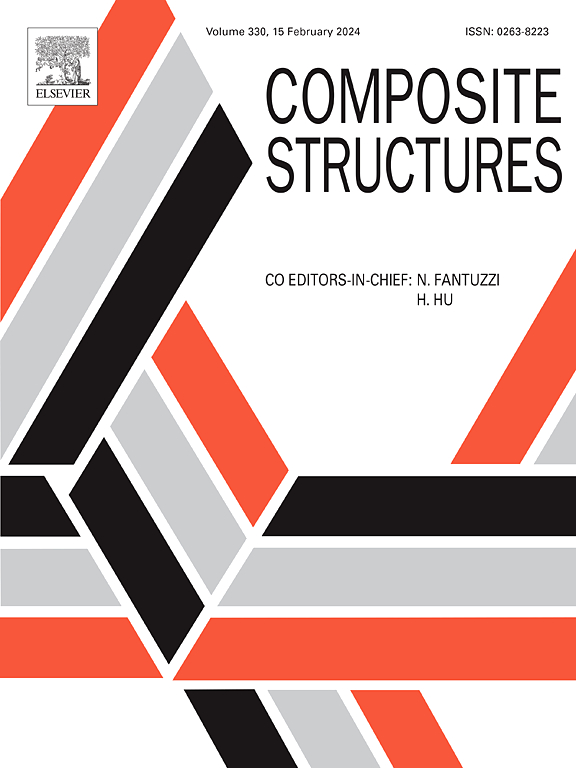Mechanical behaviors of glulam beam-to-column joints strengthened with fiber-reinforced polymer composites: Experimental investigation, numerical analysis and ANN prediction model
IF 6.3
2区 材料科学
Q1 MATERIALS SCIENCE, COMPOSITES
引用次数: 0
Abstract
Because of its respective advantages, such as high load-bearing capacity relative to their bulk, low embodied carbon and renewable properties, and sustainability, wood is becoming more popular in engineering structures. Due to several effects, some deterioration occurs in wood structures over time, and the load-bearing elements lose their properties, especially the beam-to-column joints. This study investigates the mechanical behaviors of basalt fiber-reinforced polymer (BFRP) and carbon fiber-reinforced polymer (CFRP) glulam beam-to-column joints. Beam-to-column connections are realized using three methods and are wrapped 2, 3, and 4-times. Cycle loading load–displacement experiments are performed on beam-to-column joints. Vital mechanical behaviors, including maximum load-carrying capacity, energy consumption capacity, and stiffness value, are investigated. The data obtained from the experimental study are estimated by creating a model with artificial neural networks (ANNs) and finite element (FE) analysis. The obtained findings show that the effect of reinforcement improves the rigidities, energy consumption capabilities, and load-carrying capacities of beam-to-column joints. In addition, it is observed that the load-carrying capacity of beam-to-column joints increases with the increase in the number of plies. Furthermore, it is determined that the mechanical behaviors of the beam-to-columns strengthened with CFRPs are better than those for BFRPs.
求助全文
约1分钟内获得全文
求助全文
来源期刊

Composite Structures
工程技术-材料科学:复合
CiteScore
12.00
自引率
12.70%
发文量
1246
审稿时长
78 days
期刊介绍:
The past few decades have seen outstanding advances in the use of composite materials in structural applications. There can be little doubt that, within engineering circles, composites have revolutionised traditional design concepts and made possible an unparalleled range of new and exciting possibilities as viable materials for construction. Composite Structures, an International Journal, disseminates knowledge between users, manufacturers, designers and researchers involved in structures or structural components manufactured using composite materials.
The journal publishes papers which contribute to knowledge in the use of composite materials in engineering structures. Papers deal with design, research and development studies, experimental investigations, theoretical analysis and fabrication techniques relevant to the application of composites in load-bearing components for assemblies, ranging from individual components such as plates and shells to complete composite structures.
 求助内容:
求助内容: 应助结果提醒方式:
应助结果提醒方式:


